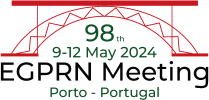Virtual Clinical Placements – Using technology to overcome challenges and enhance medical education. International project proposal.
Pavlo Kolesnyk, Francis Ugwu, Helena Manzulych, Ivanna Palok, Vlad Vlad Lazaryk, Louie Garnett, Alex Harding, Gideon Shimshon, Hutan Ashrafian, Sham Agashi
Keywords: medical education, virtual placement, family medicine, general practice, blended learning
Background:
Across the world there is a need to train more family doctors. The WHO estimates that there is a shortfall of over 1 million doctors worldwide and this is expected to rise. The lack of doctors is felt acutely in Ukraine, during war. A major limiting factor in training doctors is access to high-quality clinical learning opportunities, such as clinical placements in General Practice.
Research questions:
To evaluate the effectiveness of virtual clinical placements in medical education.
Method:
Medical students complete a 2 week clinical teaching programme based on common family medicine cases. The standard programme uses OSCE-based teaching involving simulated patients.
Virtual clinical placement using smart glasses will be tested in addition to the standard teaching
Students are assigned to one of three groups, each being taught the same content.
Additionally to the standard teaching, Group A are taught using VIRTUAL PATIENT CONSULTATIONS. They then work IN-PERSON with a facilitator.
Additionally to the standard teaching Group B are taught using VIRTUAL PATIENT CONSULTATIONS. They then work with a facilitator ONLINE.
Only the standard OCSE-based teaching will be used in Group C(control).
Results:
Pending.
Access to virtual clinical placements can provide high-quality clinical learning opportunities. Quantitative analysis will assess the effectiveness of this mode of teaching and in-person and online facilitation will be compared.
Written and practical assessments are completed at the beginning and end of the module to evaluate the changes in the students’ knowledge, skills and attitudes. A post-module questionnaire is used to assess perceptions of the different modes of teaching
Conclusions:
The intended value of this work is to provide evidence-based guidance on how clinical education within General Practice can be enhanced, and how the limitations of accessibility and capacity can be mitigated using technology.
Points for discussion:
Does offline facilitation during debrief give better teaching results than online?
Any other examples of using technology in pedagogy and evidence of it'e effectiveness?
#57

